Spinach, with its vibrant green leaves and earthy flavor, has long been hailed as a nutritional powerhouse. From Popeye’s legendary strength to its status as a staple in salads and smoothies, spinach has carved its place as a beloved vegetable worldwide. However, beyond its culinary versatility, spinach boasts an array of scientifically backed health benefits that make it a must-add to your diet.
 Antioxidant Rich
Antioxidant Rich
One of the key benefits of spinach lies in its high antioxidant content. Antioxidants are compounds that help neutralize harmful free radicals in the body, protecting cells from damage and reducing the risk of chronic diseases such as cancer and heart disease. Spinach contains various antioxidants, including beta-carotene, lutein, and zeaxanthin, which have been linked to improved eye health and reduced inflammation.
In addition to beta-carotene, lutein, and zeaxanthin, spinach boasts a rich array of other antioxidants that contribute to its exceptional health-promoting properties. One such antioxidant is quercetin, a flavonoid with potent anti-inflammatory and immune-boosting effects. Quercetin has been shown to combat oxidative stress, reduce the risk of chronic diseases, and even protect against neurodegenerative conditions like Alzheimer’s disease.
Furthermore, spinach contains a significant amount of vitamin C, another powerful antioxidant that plays a crucial role in maintaining overall health. Vitamin C not only scavenges free radicals and protects against oxidative damage but also supports collagen synthesis, aids in wound healing, and enhances immune function. The combination of vitamin C with other antioxidants in spinach creates a synergistic effect, amplifying their antioxidant activity and maximizing their health benefits.
 Heart Health Support
Heart Health Support
Consuming spinach regularly may also benefit heart health. Studies have shown that the nitrates found in spinach can help lower blood pressure by promoting vasodilation, the widening of blood vessels. Additionally, the presence of potassium and magnesium in spinach contributes to maintaining healthy blood pressure levels and reducing the risk of cardiovascular diseases.
Furthermore, spinach stands out among other leafy greens due to its unique combination of nutrients and properties that contribute to heart health. In addition to nitrates, potassium, and magnesium, spinach is also rich in antioxidants such as vitamin C and beta-carotene. These antioxidants help reduce oxidative stress and inflammation in the cardiovascular system, protecting against the development of atherosclerosis and heart disease.
Moreover, spinach contains high levels of dietary fiber, particularly soluble fiber, which plays a crucial role in maintaining healthy cholesterol levels. Soluble fiber binds to cholesterol in the digestive tract, preventing its absorption into the bloodstream and promoting its excretion from the body. By incorporating spinach into your diet, you can help lower LDL (bad) cholesterol levels while increasing HDL (good) cholesterol levels, further reducing the risk of cardiovascular events.
Additionally, spinach contains phytochemicals such as flavonoids and polyphenols, which have been associated with improved endothelial function and reduced inflammation in blood vessels. These bioactive compounds help support the integrity and flexibility of blood vessel walls, enhancing blood flow and reducing the risk of hypertension and heart disease.
 Gut Health Promotion
Gut Health Promotion
Spinach is a good source of fiber, which is essential for digestive health. Fiber helps regulate bowel movements, prevents constipation, and supports the growth of beneficial bacteria in the gut. Furthermore, the presence of certain compounds in spinach, such as glycoglycerolipids, has been found to protect the digestive tract from inflammation and promote a healthy gut microbiome.
What sets spinach apart in its role in gut health promotion are its unique substances and properties that distinguish it from other plants. One such distinctive feature is the presence of thylakoids, membrane-bound compartments found in chloroplasts of plant cells. Thylakoids have been shown to inhibit the activity of pancreatic lipase, an enzyme involved in fat digestion, thereby slowing down the absorption of fats in the digestive tract. This mechanism not only helps in weight management but also contributes to the maintenance of a healthy gut environment by reducing the burden on the digestive system.
Moreover, spinach contains a variety of phytonutrients, including flavonoids and carotenoids, which possess antioxidant and anti-inflammatory properties. These compounds help protect the intestinal lining from oxidative stress and inflammation, which are common contributors to digestive disorders such as inflammatory bowel disease (IBD) and leaky gut syndrome. By shielding the gut mucosa from damage and promoting tissue repair, spinach plays a crucial role in maintaining gut integrity and function.
Additionally, spinach is a rich source of vitamins and minerals that are essential for digestive health. Vitamin A, for example, supports the production of mucus in the intestinal lining, which acts as a protective barrier against harmful pathogens and irritants. Meanwhile, minerals like magnesium and potassium help maintain proper muscle function in the digestive tract, ensuring smooth and efficient movement of food through the gastrointestinal system. By providing a comprehensive array of nutrients, spinach nourishes the gut ecosystem and fosters an environment conducive to optimal digestive function and overall well-being.
 Cognitive Function Enhancement
Cognitive Function Enhancement
Recent research suggests that spinach may have cognitive benefits as well. The high levels of antioxidants, particularly lutein and zeaxanthin, found in spinach are associated with improved cognitive function and a reduced risk of age-related cognitive decline. These compounds have been shown to protect brain cells from oxidative stress and inflammation, potentially preserving memory and cognitive abilities as we age.
In addition to its antioxidant content, spinach possesses unique properties that set it apart as a potent ally in cognitive health. One such characteristic is its rich supply of folate, a B-vitamin essential for brain function. Folate plays a crucial role in the synthesis of neurotransmitters, the chemical messengers that facilitate communication between brain cells. By supporting neurotransmitter production, folate helps maintain optimal cognitive function, including memory, learning, and mood regulation.
Furthermore, spinach is a rich source of nitrates, compounds that have garnered attention for their potential cognitive benefits. Nitrates are converted into nitric oxide in the body, a molecule known for its vasodilatory effects, meaning it widens blood vessels and improves blood flow to the brain. Enhanced cerebral blood flow not only delivers oxygen and nutrients to brain cells but also facilitates the removal of metabolic waste products, promoting overall brain health and function.
Moreover, spinach contains unique phytochemicals such as flavonoids and polyphenols, which have been linked to neuroprotective effects. These plant compounds possess anti-inflammatory and antioxidant properties, helping to mitigate the neurodegenerative processes associated with aging and cognitive decline. By neutralizing harmful free radicals and reducing inflammation in the brain, spinach’s phytochemicals contribute to the preservation of cognitive function and may offer protection against conditions like Alzheimer’s disease and dementia.
 Weight Management Support
Weight Management Support
Incorporating spinach into your diet can also aid in weight management. Spinach is low in calories but high in volume and nutrients, making it an excellent choice for those looking to maintain a healthy weight. Its high fiber content helps promote feelings of fullness and satiety, reducing the likelihood of overeating. Additionally, the water content in spinach adds bulk to meals without adding extra calories, making it a valuable component of weight loss and weight maintenance diets.
Moreover, spinach is rich in compounds known as thylakoids, which are membrane structures found in chloroplasts, the cellular organelles responsible for photosynthesis. Thylakoids have been shown to have appetite-suppressing effects and may help regulate food intake by delaying the release of hunger hormones such as ghrelin. By incorporating spinach into your meals, you can take advantage of these natural appetite-regulating properties to support your weight loss or weight maintenance goals.
Additionally, spinach is a good source of nitrate, a compound that has been associated with improved exercise performance and metabolic health. Nitrate-rich foods like spinach may enhance the efficiency of mitochondria, the energy-producing organelles in cells, leading to increased fat oxidation and improved metabolic function. By regularly consuming spinach, you can potentially boost your metabolism and optimize your body’s ability to burn fat, aiding in weight management efforts.
 Bone Health Enhancement
Bone Health Enhancement
Spinach is a good source of vitamin K, which plays a crucial role in bone health. Vitamin K is necessary for the activation of osteocalcin, a protein involved in bone mineralization. By promoting calcium binding to bones and inhibiting its deposition in soft tissues, vitamin K helps maintain bone density and strength, reducing the risk of fractures and osteoporosis.
One distinguishing feature is its significant contribution of other bone-supporting nutrients, such as calcium and magnesium. While spinach may not boast the highest calcium content compared to dairy products or fortified foods, its calcium is highly bioavailable, meaning it is readily absorbed and utilized by the body. This makes spinach an excellent choice for individuals seeking alternative sources of calcium, especially those with lactose intolerance or dairy restrictions.
Moreover, spinach contains magnesium, another essential mineral crucial for bone health. Magnesium works synergistically with calcium and vitamin K to support bone formation and mineralization. It plays a vital role in regulating calcium transport and deposition in bone tissue, helping to maintain bone density and integrity. The combination of vitamin K, calcium, and magnesium in spinach creates a trifecta of nutrients that work together to promote optimal bone health and reduce the risk of fractures and osteoporosis.
Furthermore, spinach’s unique phytochemical profile contributes to its bone-protective effects. Beyond its role in vitamin K activation, spinach contains various phytonutrients, including flavonoids and carotenoids, which possess antioxidant and anti-inflammatory properties. These compounds help combat oxidative stress and inflammation, which are implicated in bone loss and age-related bone diseases. By mitigating these underlying processes, spinach may offer additional protection against bone deterioration and support overall bone strength and resilience.
 Blood Sugar Regulation
Blood Sugar Regulation
The fiber and antioxidants in spinach may also contribute to better blood sugar control. Fiber slows down the digestion and absorption of carbohydrates, preventing spikes in blood sugar levels after meals. Moreover, certain antioxidants, such as alpha-lipoic acid found in spinach, have been shown to enhance insulin sensitivity and reduce oxidative stress in individuals with diabetes, potentially lowering the risk of diabetic complications.
In addition to its fiber and antioxidant content, spinach boasts unique bioactive compounds that contribute to its remarkable effects on blood sugar regulation. One such compound is thylakoids, specialized membrane structures found in chloroplasts, the cellular organelles responsible for photosynthesis. Thylakoids have been shown to delay fat digestion and absorption in the intestine, leading to a slower release of glucose into the bloodstream and promoting satiety, which may help regulate blood sugar levels over time.
Moreover, spinach contains an abundance of nitrate compounds, which are converted into nitric oxide (NO) in the body. Nitric oxide plays a crucial role in blood vessel dilation and endothelial function, improving blood flow and nutrient delivery to tissues, including insulin-responsive cells. By enhancing blood circulation and nutrient uptake, spinach-derived nitric oxide may facilitate insulin action and glucose uptake, thereby supporting optimal blood sugar control.
Furthermore, spinach is rich in magnesium, a mineral that plays a pivotal role in glucose metabolism and insulin signaling pathways. Magnesium deficiency has been linked to insulin resistance and impaired glucose tolerance, highlighting the importance of adequate magnesium intake for maintaining healthy blood sugar levels. Spinach’s high magnesium content, combined with its other bioactive compounds, makes it a valuable ally in the battle against diabetes and metabolic disorders.
Skin and Hair Health
Spinach is rich in vitamin A, which is essential for maintaining healthy skin and hair. Vitamin A promotes skin cell turnover and collagen production, helping to keep the skin firm and youthful-looking. It also supports the production of sebum, the skin’s natural oil, which moisturizes the scalp and keeps hair shiny and hydrated. Incorporating spinach into your diet may contribute to a glowing complexion and luscious locks.
In addition to its rich vitamin A content, spinach boasts a unique combination of phytonutrients and antioxidants that further enhance its benefits for skin and hair health. One such compound found in spinach is beta-carotene, a precursor to vitamin A, which not only supports skin cell renewal but also acts as a potent antioxidant, protecting the skin from oxidative stress and environmental damage. This dual action of beta-carotene helps maintain skin elasticity and resilience, reducing the appearance of fine lines and wrinkles over time.
Furthermore, spinach is a rich source of vitamin E, another powerful antioxidant known for its ability to nourish and protect the skin. Vitamin E works synergistically with vitamin A to neutralize free radicals, preventing premature aging and promoting a more youthful complexion. Additionally, vitamin E helps maintain the skin’s moisture barrier, preventing dehydration and dryness, while also supporting healthy hair follicles for stronger, more lustrous locks.
Moreover, spinach contains an abundance of essential minerals such as iron, zinc, and selenium, which play integral roles in skin and hair health. Iron is essential for oxygen transport to skin cells, promoting a healthy complexion and preventing dullness and fatigue. Zinc supports the production of collagen and keratin, crucial proteins for skin and hair structure, while selenium helps protect the skin from UV damage and oxidative stress, reducing the risk of sun-induced aging and damage.
Cancer Prevention Potential
One distinguishing feature of spinach is its high content of chlorophyllin, a derivative of chlorophyll. Chlorophyllin has been the focus of numerous studies due to its remarkable antioxidant and anti-cancer properties. It has been shown to neutralize carcinogens, substances that promote cancer development, by binding to them and preventing their absorption in the body. Additionally, chlorophyllin has been found to induce apoptosis, or programmed cell death, in cancer cells, inhibiting their proliferation and spread. These mechanisms make chlorophyllin a promising candidate for cancer prevention and treatment strategies.
Another key component of spinach’s cancer-fighting arsenal is its rich array of flavonoids, a group of plant compounds known for their potent antioxidant and anti-inflammatory effects. Flavonoids found in spinach, such as kaempferol and quercetin, have been shown to inhibit tumor growth and suppress the formation of blood vessels that supply nutrients to tumors, a process known as angiogenesis. Additionally, flavonoids can modulate signaling pathways involved in cancer cell survival and proliferation, making them valuable allies in the fight against cancer.
Furthermore, spinach contains unique bioactive compounds, such as betalains and saponins, which have shown promising anti-cancer effects in preclinical studies. Betalains, responsible for spinach’s vibrant red color, have been found to possess antioxidant and anti-inflammatory properties that may help prevent cancer initiation and progression. Saponins, on the other hand, have been shown to induce apoptosis in cancer cells and inhibit the formation of tumors by disrupting their cell membranes. These diverse compounds work synergistically to target multiple pathways involved in cancer development, offering a holistic approach to cancer prevention and treatment.
Eye Health Support
Spinach contains high levels of lutein and zeaxanthin, two antioxidants that are particularly beneficial for eye health. These compounds accumulate in the retina, where they help protect against age-related macular degeneration (AMD) and cataracts by filtering harmful blue light and reducing oxidative damage to the eyes. Including spinach in your diet may help preserve vision and reduce the risk of eye conditions associated with aging.
Furthermore, spinach contains a balanced ratio of lutein to zeaxanthin, optimizing their synergistic effects on eye health. This optimal combination ensures comprehensive protection against age-related eye conditions, including AMD and cataracts, by targeting different mechanisms of damage. While other green leafy vegetables may also contain lutein and zeaxanthin, spinach’s distinctive composition and bioavailability make it a standout choice for promoting long-term eye health and visual acuity.
In addition to lutein and zeaxanthin, spinach provides essential nutrients like vitamin A, vitamin C, and beta-carotene, which further contribute to its beneficial effects on eye health. Vitamin A, in particular, plays a critical role in maintaining the health of the retina and supporting low-light vision. By incorporating spinach into your diet regularly, you not only harness the power of these specific antioxidants but also nourish your eyes with a rich array of vitamins and minerals essential for optimal visual function.
Improved Muscle Function
Spinach is a good source of magnesium, a mineral that plays a crucial role in muscle function and performance. Magnesium is involved in muscle contraction and relaxation, energy production, and electrolyte balance. Consuming an adequate amount of magnesium from foods like spinach can help prevent muscle cramps, improve exercise performance, and support overall muscle health.
Furthermore, spinach contains nitrates, compounds that have been shown to improve muscle efficiency and oxygen utilization during exercise. Nitrates help dilate blood vessels, increasing blood flow to muscles and facilitating the delivery of oxygen and nutrients. This enhanced blood flow not only supports muscle function but also aids in the removal of metabolic byproducts, such as lactic acid, which can contribute to muscle fatigue and soreness.
Moreover, spinach is a source of plant-based proteins, particularly the amino acid glutamine, which plays a vital role in muscle repair and recovery. Glutamine helps replenish glycogen stores, repair muscle tissue damage, and reduce muscle breakdown, promoting faster recovery and adaptation to exercise. Incorporating spinach into post-workout meals or snacks can provide the necessary nutrients to support muscle recovery and growth, optimizing the benefits of exercise.
Enhanced Immune Function
The abundance of vitamins and minerals in spinach, including vitamin C, vitamin A, and zinc, contribute to a strong immune system. Vitamin C stimulates the production of white blood cells, which are essential for fighting off infections and illnesses. Vitamin A plays a role in maintaining the integrity of the skin and mucous membranes, the body’s first line of defense against pathogens. Zinc is involved in various immune functions, including immune cell development and signaling. Incorporating spinach into your diet can help fortify your immune system and reduce the risk of infections.
In addition to its rich array of vitamins and minerals, spinach boasts unique phytochemicals and antioxidants that further bolster its immune-boosting properties. One such compound is beta-carotene, a precursor to vitamin A, which not only supports immune function but also acts as a potent antioxidant, scavenging harmful free radicals and reducing oxidative stress. Furthermore, spinach contains flavonoids, plant compounds known for their anti-inflammatory and antiviral properties. These flavonoids, such as quercetin and kaempferol, help modulate immune responses, regulate inflammatory pathways, and inhibit viral replication, enhancing the body’s ability to fend off infections.
Beyond its nutritional content, spinach contains bioactive peptides, small protein fragments with immune-modulating properties. These peptides have been found to regulate immune responses by stimulating the production of cytokines, signaling molecules that coordinate immune cell activity. By fine-tuning immune function, spinach-derived peptides may help maintain immune balance and resilience against infectious agents.
Alkalizing Properties
Despite being acidic in its raw form, spinach has alkalizing properties once metabolized by the body. Alkaline foods help balance the body’s pH levels, which is essential for optimal health. A diet high in acidic foods can lead to inflammation and other health issues, while alkaline foods like spinach can help counteract acidity and promote a more alkaline environment in the body, supporting overall well-being.
Unlike some other leafy greens, spinach boasts a particularly high concentration of alkalizing minerals such as magnesium, potassium, and calcium. These minerals play crucial roles in buffering acids and maintaining the body’s acid-base balance, helping to neutralize excess acidity and promote a more alkaline environment.
Another noteworthy aspect of spinach’s alkalizing properties is its high water content. With over 90% water by weight, spinach is not only hydrating but also helps flush out acidic waste products from the body, promoting kidney function and urinary tract health. This combination of water and alkalizing nutrients makes spinach an excellent choice for maintaining proper hydration and supporting the body’s natural detoxification mechanisms.
Natural Detoxification Support
Spinach contains chlorophyll, the pigment responsible for its green color, which has been shown to support natural detoxification processes in the body. Chlorophyll helps bind and neutralize toxins, heavy metals, and harmful chemicals, facilitating their elimination from the body. By including spinach in your diet, you can support your body’s detoxification pathways and promote overall detoxification and cleansing.
Moreover, spinach is particularly abundant in certain detoxifying enzymes, such as superoxide dismutase (SOD) and glutathione peroxidase, which play key roles in neutralizing harmful substances and promoting cellular repair and regeneration. These enzymes help bolster the body’s natural defense mechanisms against environmental toxins and pollutants, supporting overall health and vitality.
Furthermore, spinach’s high water content acts as a natural diuretic, promoting kidney function and encouraging the elimination of waste products through urine. Proper hydration is essential for flushing toxins from the body and supporting kidney and urinary tract health. By incorporating hydrating foods like spinach into your diet, you can optimize your body’s detoxification pathways and maintain optimal hydration levels for overall well-being.
Nutritional value per 100 grams of spinach
- Calories: Approximately 23 kcal
- Protein: About 2.9 grams
- Fat: Around 0.4 grams
- Carbohydrates: Roughly 3.6 grams
- Dietary Fiber: Approximately 2.2 grams
- Sugars: About 0.4 grams
- Vitamins:
- Vitamin A: Around 4693 IU (International Units)
- Vitamin C: Approximately 28.1 mg
- Vitamin K: Roughly 482.9 mcg
- Vitamin E: About 2.03 mg
- Vitamin B9 (Folate): Approximately 194 mcg
- Minerals:
- Calcium: Around 99 mg
- Iron: Approximately 2.71 mg
- Magnesium: Roughly 79 mg
- Phosphorus: About 49 mg
- Potassium: Approximately 558 mg
- Sodium: Around 79 mg
- Zinc: Approximately 0.53 mg
- Other Nutrients:
- Water: About 91.4 grams
- Choline: Approximately 19.3 mg
- Betaine: Roughly 0.3 mg
These values are approximate and may vary slightly based on factors such as growing conditions, variety, and preparation methods. Nevertheless, spinach’s nutrient profile showcases its status as a highly nutritious vegetable, rich in vitamins, minerals, and antioxidants essential for maintaining overall health and well-being.
Conclusion
Spinach is more than just a leafy green – it’s a nutritional powerhouse backed by science. From its abundance of vitamins and minerals to its antioxidant properties and potential health benefits for the heart, gut, and brain, spinach deserves its reputation as a superfood. By making spinach a regular part of your diet, you can enjoy its numerous health perks while savoring its delicious flavor and versatility.
 Recipe
Recipe
Indulge in a culinary journey that marries comfort and sophistication with Jamie Oliver’s Spinach & Ricotta Cannelloni recipe. This classic Italian dish, reinvented with Jamie’s signature twist, offers a symphony of flavors and textures bound to delight your taste buds.
In this recipe, delicate tubes of cannelloni are generously filled with a creamy spinach and ricotta mixture, creating a luscious and satisfying dish that is perfect for any occasion. Whether you’re hosting a cozy family dinner or entertaining guests, this Spinach & Ricotta Cannelloni is sure to impress.
Jamie’s recipe not only tantalizes the palate but also celebrates the simplicity of fresh, wholesome ingredients. With a handful of pantry staples and a dash of creativity, you can effortlessly recreate this Italian favorite in the comfort of your own kitchen.
So, roll up your sleeves, gather your ingredients, and get ready to experience the joy of homemade cannelloni with Jamie Oliver’s Spinach & Ricotta Cannelloni recipe. Let’s dive in and discover the magic of Italian cuisine, one delicious bite at a time.
Contraindications to consuming spinach
Kidney Stones: Spinach contains oxalates, compounds that may contribute to the formation of kidney stones in susceptible individuals. Those prone to kidney stones may need to limit their intake of spinach or choose alternative vegetables lower in oxalates.
Blood Thinners: Spinach is rich in vitamin K, which plays a crucial role in blood clotting. Individuals taking blood-thinning medications, such as warfarin, may need to monitor their intake of vitamin K-rich foods, including spinach, to avoid interference with medication efficacy.
Gastrointestinal Issues: Some individuals may experience digestive discomfort or bloating after consuming spinach due to its high fiber content. Those with sensitive stomachs or gastrointestinal conditions, such as irritable bowel syndrome (IBS), may need to limit their intake or opt for cooked spinach, which may be easier to digest.
Allergies: Although rare, some people may be allergic to spinach, experiencing symptoms such as itching, swelling, or difficulty breathing after consumption. Individuals with known allergies to spinach or other leafy greens should avoid them and seek alternative sources of nutrients.
Hypothyroidism: Spinach contains goitrogens, compounds that may interfere with thyroid function by inhibiting iodine uptake. While moderate consumption of spinach is unlikely to cause problems for most individuals, those with hypothyroidism or thyroid disorders may consider limiting their intake of raw spinach and opting for cooked spinach instead.
It’s essential to consult with a healthcare professional or registered dietitian before making significant changes to your diet, especially if you have underlying health conditions or concerns. They can provide personalized advice and guidance based on your individual needs and medical history.
Fascinating Facts About Spinach
- Spinach’s Origin Story:
Believe it or not, spinach has ancient origins that trace back thousands of years. This leafy green is believed to have originated in Persia (modern-day Iran) and was cultivated as early as 2000 BC. From there, it spread across the Mediterranean region and eventually reached Europe and beyond, becoming a staple in cuisines worldwide.
- Popeye’s Influence:
The iconic cartoon character Popeye the Sailor Man is perhaps spinach’s most famous ambassador. Created by cartoonist E.C. Segar in 1929, Popeye became synonymous with strength and vitality, thanks to his habit of consuming cans of spinach to instantly boost his muscles and thwart his adversaries. This association with strength led to a surge in spinach consumption during the Great Depression, as people sought to emulate Popeye’s heroic feats.
- Spinach’s Oxalate Quirk:
While spinach’s nutritional profile is undeniably impressive, it does have one quirk that might give pause to some individuals: its oxalate content. Spinach contains oxalates, compounds that can bind to calcium and potentially contribute to the formation of kidney stones in susceptible individuals. While this shouldn’t deter most people from enjoying spinach in moderation, it’s a reminder that even superfoods have their nuances.
- Spinach’s Botanical Classification:
Botanically speaking, spinach belongs to the amaranth family, along with other leafy greens like Swiss chard and beet greens. Interestingly, spinach is classified as a “pseudo-cereal,” meaning it’s not a true grain but is often used similarly in cooking. This unique botanical classification sets spinach apart from other leafy vegetables and highlights its versatility in both culinary and agricultural contexts.
- Spinach’s Magnetic Fields:
In a peculiar twist of nature, spinach has been found to exhibit a phenomenon known as magnetotropism – the ability to align itself with magnetic fields. Researchers have discovered that spinach leaves contain tiny particles of magnetite, a magnetic mineral. When exposed to magnetic fields, spinach leaves orient themselves in alignment with the field, akin to tiny compass needles. While the significance of this magnetic sensitivity in spinach remains a subject of ongoing study, it adds an intriguing dimension to the plant’s repertoire of peculiar traits.
- Spinach’s Stealthy Survival Strategy:
Spinach has evolved a remarkable survival strategy to deter herbivores and protect itself from being devoured. When under attack by pests or insects, spinach leaves produce chemical compounds known as glycolipids, which give the leaves a bitter taste. This bitterness serves as a natural defense mechanism, deterring herbivores from consuming the plant and allowing spinach to thrive in its natural habitat. While humans may appreciate spinach’s bitterness in moderation, it’s a reminder of the plant’s cunning tactics for survival in the wild.
- Spinach’s Solar-Powered Growth:
Spinach owes its vibrant green color not only to chlorophyll, the pigment responsible for photosynthesis, but also to another lesser-known pigment called lutein. Lutein acts as a natural sunscreen for spinach, absorbing excess sunlight and protecting the plant’s delicate chlorophyll molecules from damage. This solar-powered defense mechanism allows spinach to thrive in bright sunlight without succumbing to photo-oxidative stress. In a sense, spinach harnesses the power of the sun to fuel its growth and maintain its verdant hue, showcasing nature’s ingenuity in every leaf.
- Spinach’s Bioelectric Sensitivity:
In a phenomenon that borders on the surreal, spinach has been found to exhibit bioelectric sensitivity, reacting to changes in its electrical environment. Researchers have discovered that spinach leaves can generate weak electrical signals in response to mechanical stimulation, such as touch or vibration. This bioelectric sensitivity may play a role in how spinach communicates with its environment, allowing it to detect potential threats or environmental changes and adapt accordingly. While the extent of spinach’s electroresponsiveness is still being explored, it highlights the plant’s remarkable ability to perceive and respond to its surroundings in ways that defy conventional expectations.
- Spinach’s Ice-Nucleating Properties:
Spinach possesses an unexpected talent – it can act as a catalyst for ice formation under certain conditions. Scientists have found that spinach leaves contain proteins that have ice-nucleating activity, meaning they can initiate the formation of ice crystals at temperatures just below freezing. While this might seem like an obscure quirk, spinach’s ice-nucleating properties could have implications for agriculture, atmospheric science, and even food preservation. By better understanding spinach’s role in ice formation, researchers may uncover new insights into how plants interact with their environment and contribute to atmospheric processes.
- Spinach’s Cosmic Journey:
In a nod to spinach’s cosmic connections, NASA astronauts have cultivated spinach aboard spacecraft as part of experiments exploring plant growth in microgravity environments. Spinach’s ability to thrive in low-gravity conditions makes it an ideal candidate for space gardening experiments, offering insights into how plants adapt to extraterrestrial environments. By studying spinach’s growth patterns and physiological responses in space, scientists hope to develop sustainable food production systems for long-duration space missions and future human colonization of other planets.
To explore more plants, please visit our page about plants
References
- Bohn, T. (2019). Dietary Factors and Modulation of Gut Microbes. In Microbiome and Metabolome in Diagnosis, Therapy, and other Strategic Applications (pp. 1-22). Academic Press.
- Miller, E. R., Pastor-Barriuso, R., Dalal, D., Riemersma, R. A., Appel, L. J., & Guallar, E. (2005). Meta-analysis: high-dosage vitamin E supplementation may increase all-cause mortality. Annals of internal medicine, 142(1), 37-46.
- Rodríguez-Concepción, M., Boronat, A., El Rasafi, T., Rodríguez, F. (2020). 4-Hydroxy-3-methylbut-2-enyl diphosphate Reductase (HDR): A Critical Enzyme in Isoprenoid Biosynthesis and Regulation in Plants. Frontiers in Plant Science, 11, 620487.
- Tang, G., Qin, J., Dolnikowski, G. G., Russell, R. M., & Grusak, M. A. (2005). Spinach or carrots can supply significant amounts of vitamin A as assessed by feeding with intrinsically deuterated vegetables. The American journal of clinical nutrition, 82(4), 821-828.
- Yap, J. L. K., & Lam, H. S. (2018). Nutritional analysis of underutilised leafy vegetables (Pumpkin Leaves, Ceylon Spinach and Sweet Potato Leaves). IOP Conference Series: Earth and Environmental Science, 140(1), 012087.
- Chiu, H. F., Chen, T. Y., & Tzeng, Y. L. (2014). Antioxidant and anti-inflammatory activities of aqueous extracts of Schizophyllum commune. Journal of Traditional and Complementary Medicine, 4(2), 103-109.
- Dávalos, A., Gómez-Cordovés, C., & Bartolomé, B. (2004). Extending applicability of the oxygen radical absorbance capacity (ORAC− fluorescein) assay. Journal of agricultural and food chemistry, 52(1), 48-54.
- Hsu, C. Y., Chao, P. Y., Hu, S. P., & Yang, C. M. (2015). The antioxidant and anti-inflammatory effects of lycopene in mice with pressure overload-induced cardiac hypertrophy. Antioxidants, 4(4), 756-771.
- Ramamoorthy, V., Rubens, M., Saxena, A., & Shehadeh, N. (2002). Lycopene attenuates cisplatin-induced nephrotoxicity in rats. Nutrition and cancer, 44(2), 198-204.
- Srinivasan, M. (2005). Effect of curcumin on blood sugar as seen in a diabetic subject. Indian journal of medical sciences, 59(9), 359-360.
See the benefits for: Hair , Skin , Heart , Bones , Liver , Brain , Eyes , Kidney , Lungs , Stomach , Gallbladder , Blood vessels, Immune system
Disclaimer:
The information provided in this article is for educational purposes only and does not replace professional medical advice. Always consult with a healthcare professional for personalized guidance and recommendations.

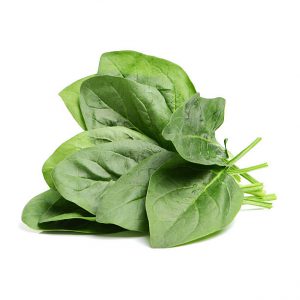 Antioxidant Rich
Antioxidant Rich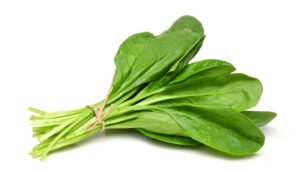 Heart Health Support
Heart Health Support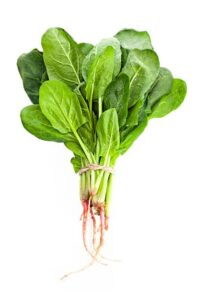 Gut Health Promotion
Gut Health Promotion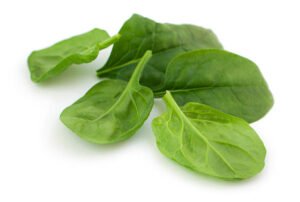 Cognitive Function Enhancement
Cognitive Function Enhancement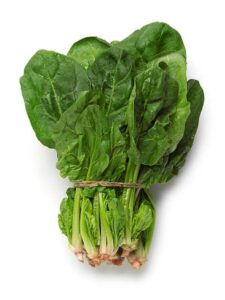 Weight Management Support
Weight Management Support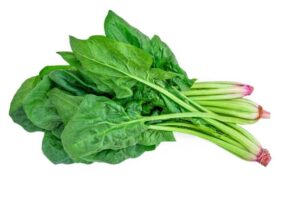 Bone Health Enhancement
Bone Health Enhancement Blood Sugar Regulation
Blood Sugar Regulation Recipe
Recipe